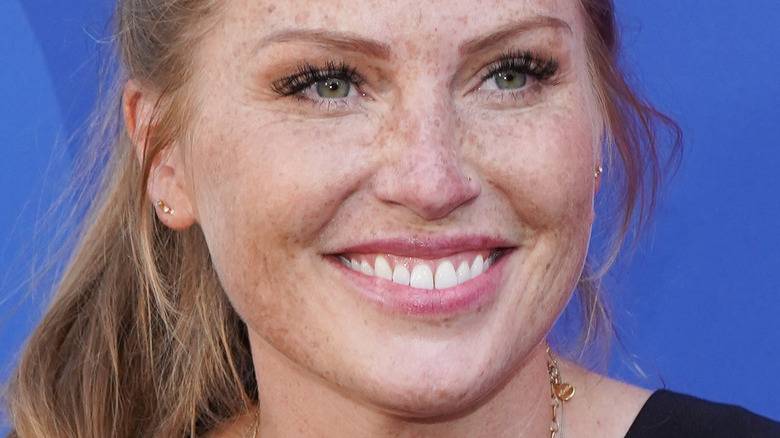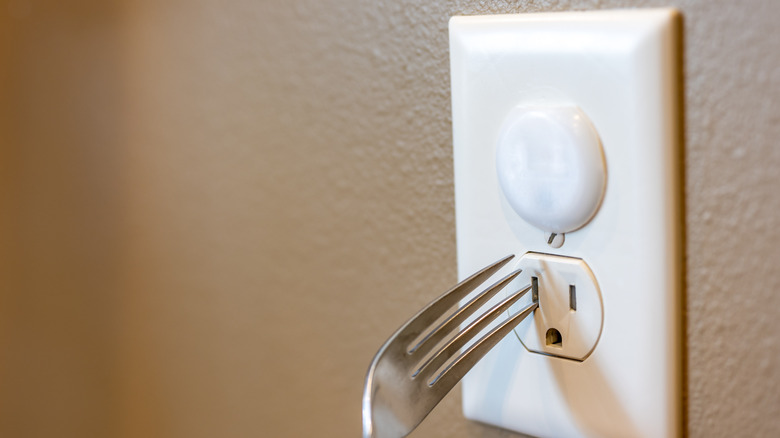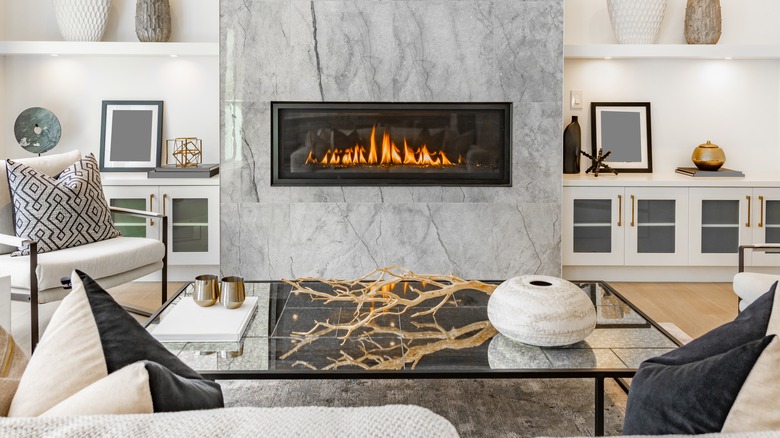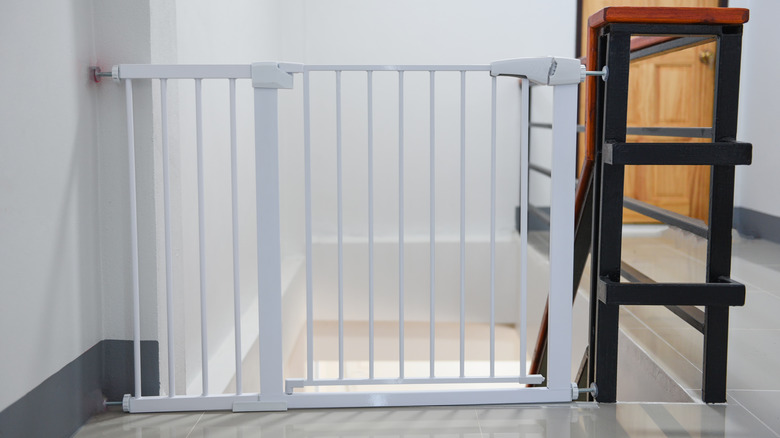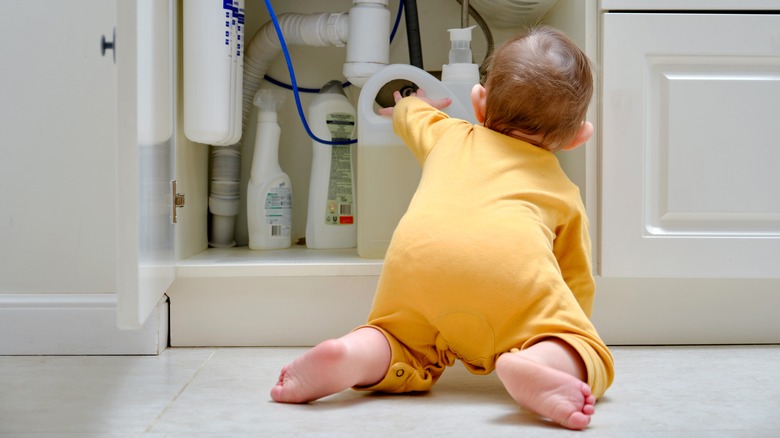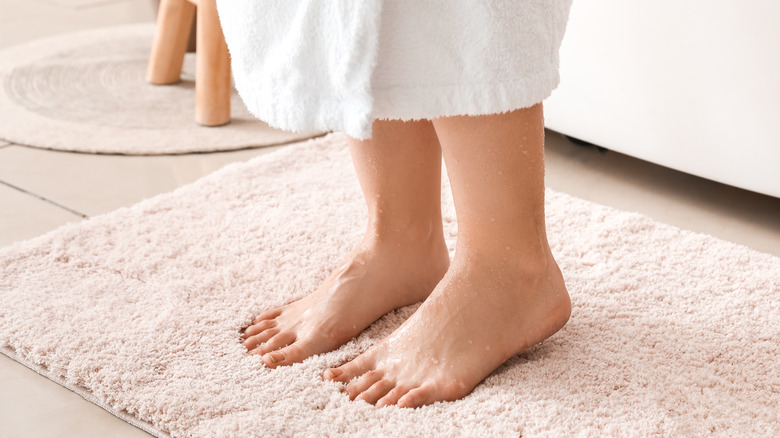HGTV's Mina Starsiak Hawk's Tricks For Childproofing Your Home In Style
For those who have a new addition to their family or may have children that get into just about anything, childproofing is an essential step in keeping kids safe. The U.S. Centers for Disease Control and Prevention state that in 2019, about 20 children per day died from unintentional injuries at home, accounting for more than 7,000 lives. How can you make your home safer? Having some good advice may be just what you need.
Noted for her HGTV show "Good Bones," Mina Starsiak Hawk is a pro at home renovations, often turning dilapidated properties into beautiful, high-value homes. The co-founder of Two Chicks and a Hammer, she has lots of time in the industry rehabbing, but she's also a mother and the author of a children's book. In an online chat with The Washington Post's Home Front (via the Tyler Morning Telegraph), Starsiak Hawk shared a wide range of helpful tips and resources for turning anyone's home into a space that's safe for children.
1. Focus on electrical outlets
Electrical outlets are located throughout your home for convenience, but they pose a significant risk for children. The Electrical Safety Foundation International states that 2,400 children annually are either shocked or burned as a result of electrical outlets, often because they stick things into outlets, including their fingers.
Mina Starsiak Hawk recommends making changes to your outlets as a first step to reducing those risks to kids at home. She says purchasing a package of outlet covers and placing them into each of the receptacles throughout your home is a solid solution.
It's easy to find outlet covers inexpensively, and she states they'll continue to work well, at least while your children are younger. Be sure that, when someone uses the outlet, they put the cover back in place. With such a big risk, this should be a priority for most families when it comes to childproofing their home, especially areas a child can access readily.
2. Childproof those sharp edges
If you get on your hands and knees and crawl through your home at your child's eye level, chances are good you'll find some hidden dangers. That includes sharp edges on tables, desks, bookshelves, and fireplaces. These sharp edges can easily create cuts or, even worse, allow a child to bump their head causing injuries.
When asked about those sharp edges, Mina Starsiak Hawk said that rubber L channels are a solid solution. According to supplier McMaster-Carr, you can choose from a wide range of options in these, including various materials and sizes to fit just about any edge or surface in the home. Many are made of rubber, which helps soften the blow if a child strikes their head on them. Some have a foam trim design that adds even more protection. Starsiak Hawk warns, though, it's really hard to find a way to reduce those edge risks and still keep your home's look.
3. Tackle the steps with gates
Many parents recognize the risks of combining kids and stairs. Kids in Danger (KID) reports a child ends up in the emergency room once every six minutes in the U.S. as a result of an injury from stairs. The use of baby gates has long been an option here, as that helps to create a barrier and eliminates access.
For some families, baby gates are not only hard to use but also less aesthetically pleasing. That's why Mina Starsiak Hawk recommends the use of a retractable gate. These work by attaching a compartment-like fixture to one wall at the top or bottom of the stairs. When you want to block the area off, you pull the fabric material out from within that mounted component across the stairs. When not in use, it's easy to release it, and it retracts back into the attachment. She notes you can purchase them in various colors to create a more pleasing look to the staircase.
4. Moving chemicals out of the way
It's quite common for people to store cleaning chemicals, like polishes, soaps, and bleach products, under the kitchen sink, but that's also one of the highest-risk places to do so in a home with a child that's just learning to crawl and pull themselves up. Those cabinets are appealing places to explore. This area is a big risk factor for child injury. Statistics from the National Capital Poison Center state that 37.9 poison exposures occur for every 1,000 children in the U.S. in kids under the age of six.
Mina Starsiak Hawk offers a simple suggestion that really costs nothing. For those that may not want to use cabinet door closures and locks, consider just moving the chemicals from this area. Put them into a higher cabinet or another lockable space in the home the child doesn't have access to. Place the pots and pans in the lower cabinet. Though noisier when they find them, that's far safer.
5. Consider flooring carefully
Though most people focus on choosing flooring that's right for their home's look or what style they enjoy, you could take into consideration your child's safety, too. A big area of concern is the bathroom. Tile is hard and not as forgiving when a child hits their head. Mina Starsiak Hawk recommends the use of engineered vinyl planking as an alternative, noting that it's better at withstanding moisture. You can often purchase products that are less slippery and may not put your child at risk of falling as easily.
Not all vinyl flooring products are slip-resistant, though, so you'll need to be careful in your selection process. All About Materials states that some of the best luxury vinyl planks are designed to include more slip-resistance in them, making them a safe option even when the floor is wet from the kids splashing in the bathtub. That could offer some peace of mind for worried parents.
